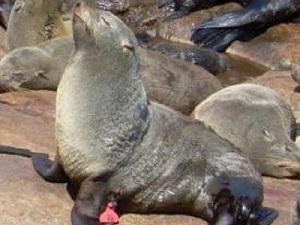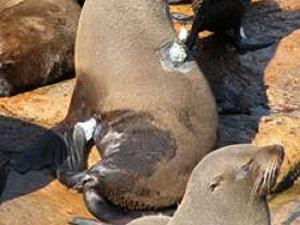Valentina Franco Trecu
Other projects
15 Feb 2012
Uncovering Population Dynamics of Two Sympatric Otariids Species with Contrasting Population Trends in Uruguay: Otaria favescens and Arctocephalus australis
The overall aim of this project is to study the foraging behaviour and the trophic overlap of lactating South American sea lions and fur seal.

The position of an organism in the trophic web and its ecological role in an ecosystem are determined by its feeding habits (Pauly et al. 1998). Many marine mammals are on the top of the aquatic trophic webs and so, the study of its trophic habits has been an interest for the scientific community, mainly when modelling the functioning of food webs and estimating the effect of predation in the structure of the community (Pauly et al. 2000). The information about diet and habitat use of individuals helps to identify critical zones for the establishment and implementation of Marine Protected Areas. Two otariid species breed in Uruguay: the South American fur seal (SAFS), Arctocepahlus australis, for which the Uruguayan rookery represents the largest colony of the species, estimated in ca. 350,000 individuals and the South American sea lion (SASL), Otaria flavescens, who faced high exploitation levels (approximately 47.500 sea lions were taken between 1963 and 1986) and a present population of 12 mil individuals (Páez 2006).

The lack of management and conservation strategies regarding the SASL, has resulted in a dramatic population declining in Uruguay during the last decade (Páez 2006). There is limited knowledge about the population biology, breeding and feeding habits and ecological role of the SASL in Uruguayan waters, information which is fundamental to develop effective management and conservation plans. High harvest levels in the past may be one of the causes but cannot solely account for the observed SASL population decline, thus other potential causes are suspected such as; operational interactions with local fisheries and resource competition with sympatric SAFS may be contributing to its decline (Szteren et al. 2004).
My study demonstrated that SAFS females had a high variation in their foraging-trips’ duration and I suggested that they might forage in the same area as SASL female. In the present study, I will assess whether feeding overlap between both species occurs along the year and will compare the diving behaviour of lactating SASL and SAFS as a proxy to estimate spatial overlap. This information is fundamental to develop effective management and conservation plans.